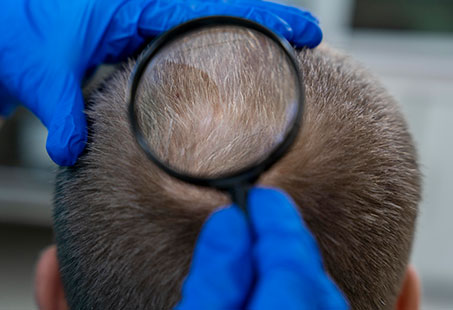It is common for people to lose hair on their crowns over the course of their lives. Usually, a bald spot on the crown develops due to androgenetic alopecia. However, there are other reasons why this can happen.
The problem is that it’s hard to see the bald spot on the crown yourself. But there are some things you can do to identify crown hair loss while it’s still in its early stages.
While the hair loss may not be completely reversible, there are treatments to slow it down and even improve the overall density in the crown area.
In this guide, you’ll learn everything you need to know about crown bald spots.
Where Is The Crown Of Your Hair?
The crown, also known as the vertex, is the highest point on the scalp. It’s the curving top you see at the back of the head.
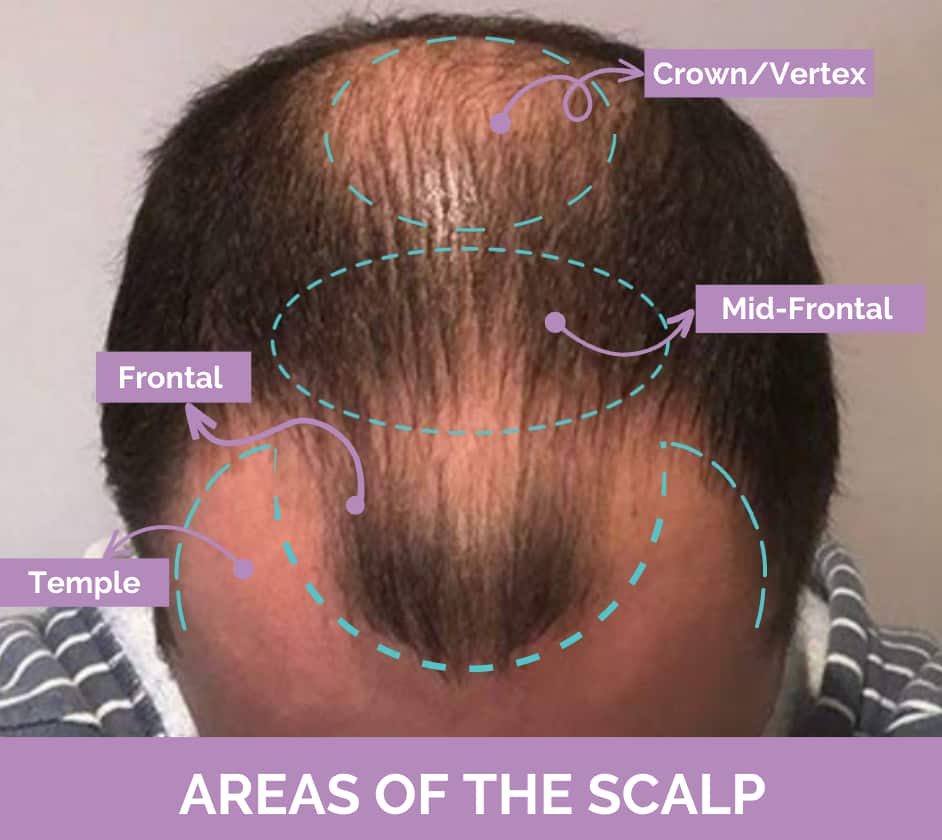
The primary function of the crown area, like other parts of the skull, is to protect the brain underneath it.
However, it also has a cosmetic function because of hair growth. Usually, it’s in the form of a circular pattern called a hair whorl.
It’s more visible when the hair is short. And since men’s hair is typically shorter, you can clearly see a hair whorl (or two) on their scalps. It may also come with a cowlick hair.
Here, it should, however, be noted that because of the hair whorl, the crown area of the scalp usually appears thinner. It’s simply because of how the hair is arranged there.
It may look even thinner or balder if you have more than one hair whorl. But it’s not always a sign of hair loss.
How Do You Know If Your Crown Hair Is Thinning?
If you’re losing crown hair, you might notice localised or overall thinning of the hair on the top and front of your scalp. As a result, you might notice more breeze on your crown area. Additionally, you might have more sunburns.
Depending on the cause of crown hair loss, the quality of your hair might also change quite prominently. For instance, the shaft’s thickness may decrease, the texture may become drier, or the colour may lighten.
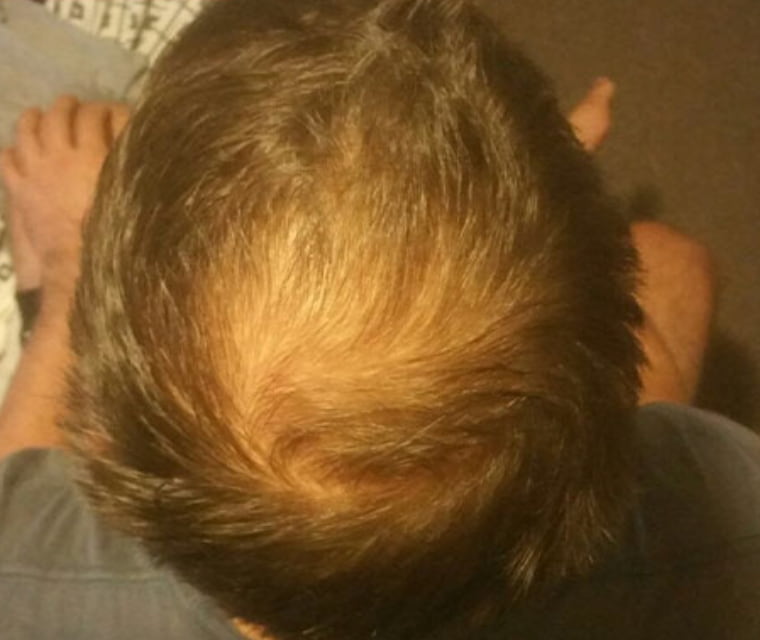
You can also just hold a mirror to the back of your head to see if your crown hair is thinning. If not that, ask someone to take a picture of it. That way, you’ll have a clear before and after shot of your thinning crown.
What Causes Hair Loss On Crown?
Androgenetic alopecia, also known as pattern baldness, is the most common cause of hair loss in the crown area.
According to the Norwood scale, it results in progressive hair loss, starting with the recession of the hairline followed by the thinning of the crown.
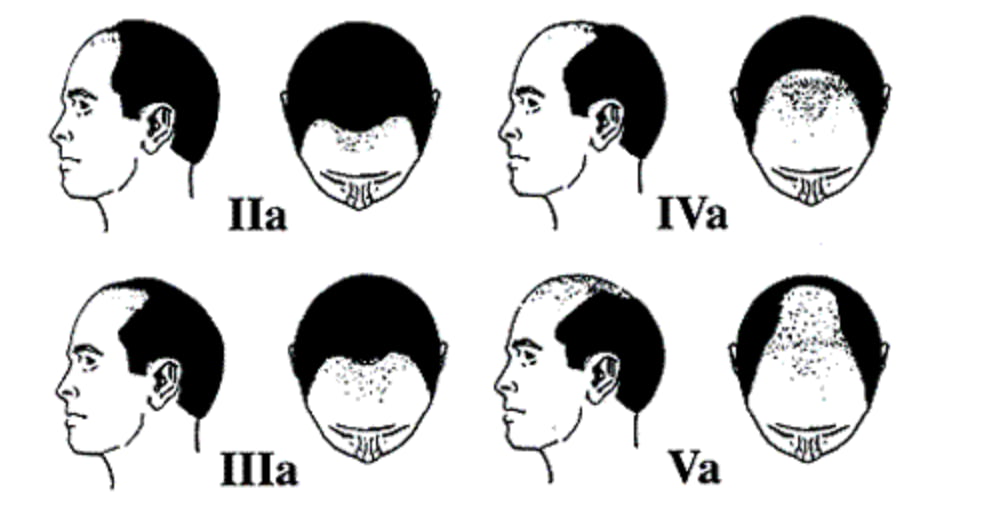
If genetic hair loss is the reason why your crown is thinning, it’s likely that it will go completely bald after some time. It’s because the follicles in that area are very sensitive to the hormone dihydrotestosterone (DHT). That essentially miniaturizes the follicles.
Other than androgenetic alopecia, there are other causes of crown hair loss. These are as follows:
- Traction alopecia – tension on follicles from tight hairstyles
- Trichotillomania – urge to pull hair from the scalp
- Alopecia areata – immune cells attack healthy hair follicles
- Telogen effluvium – physical or emotional stress leads to hair loss
- Overstyling – damage from chemicals and heat tools
- Medical therapy – side effect of drugs causes hair loss
- Nutritional deficiency – shock or lack of nutrients results in hair loss
- Hormonal imbalance – growth cycle is disrupted
- Illness – symptom or shock causes hair loss
- Trauma – follicles are permanently damaged
Since there are many different causes of hair loss, it’s important to get yourself checked for an accurate diagnosis on your crown hair loss.
How Long Does Crown Balding Take?
According to Patient UK, it can take 15-20 years for your scalp to go bald due to pattern baldness. So, crown hair loss may proceed gradually over a decade or so.
However, other types of hormonal hair loss can also result in gradual thinning. For instance, diffuse hair loss due to thyroid dysfunction (overactive or underactive thyroid gland) progresses slowly over several months.
Crown hair loss isn’t always gradual, though. Depending on the cause of the problem, it can also be sudden. For example, alopecia areata begins quite suddenly and leaves bald patches on the scalp.
It all depends on why you’re losing hair in the first place.
How To Hide Hair Loss At The Crown?
If you have a bald spot on your crown, you can hide it with:
- Hair toppers
- Wiglets
- Hair fibres
- Scalp micropigmentation
- Volumiser spray
- Buzzcuts
While these hair accessories can provide a temporary fix, you shouldn’t delay diagnosis and treatment of the underlying problem.
How Do You Fix Crown Hair Loss?
You can permanently restore hair in your crown area by getting a hair transplant. Keep in mind, however, a transplant surgery won’t reverse or cure crown hair loss.
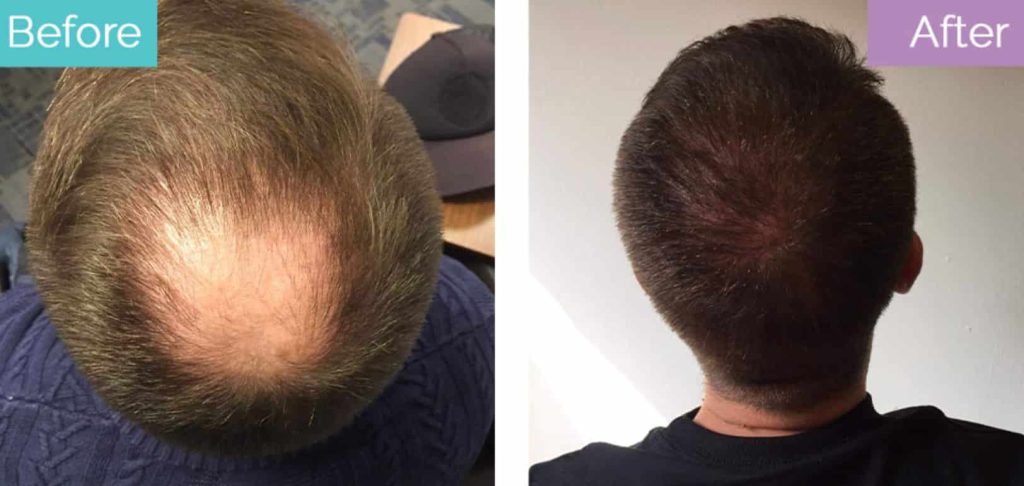
Crown hair transplant will give you permanent, natural-looking results. Additionally, it’s a very effective treatment option if you’re experiencing permanent hair loss.
Aside from surgery, medications are also offered as treatment options for crown thinning. These include:
- Minoxidil
- Finasteride
- Dutasteride
- Spironolactone
- Steroids
Howeverhese drugs won’t give you permanent results, and they can cause a lot of side effects as well. So, make sure to discuss it with your doctor.
There are other non-surgical alternatives that may be recommended to you, such as laser hair growth therapy or platelet-rich plasma injections.
Treatment will depend on the reason why you’re losing crown hair. It may not always be required.
For instance, if your crown is thinning due to traction alopecia, all you need to do is stop tying your hair too tightly. But if the hair loss has become permanent, surgery and medications are the usual options.
Can You Regrow Hair On Crown?
Regrowing hair on your crown is possible if the hair follicles haven’t been permanently damaged or miniaturized. Still, if you’re experiencing progressive hair loss, it may be possible to halt or slow down the process with the right treatment.
On the other hand, if the hair loss is temporary, your hair will start growing after the underlying problem has been resolved. If, for example, you have a bald spot on your crown due to severe alopecia areata, hair growth should restart after you’ve received treatment.
How To Prevent Hair Loss On Crown?
It may not be possible to prevent crown hair due to permanent scalp alopecia. But you can prevent it from happening in some other instances. For that, make sure to:
- Wear hairstyles that don’t pull on your scalp.
- Avoid using a lot of heat-styling tools.
- Use products that don’t damage the hair or scalp skin.
- Eat healthy and nutritious meals.
- Keep your scalp clean with regular washes.
- Seek help from a mental health professional (for trichotillomania or stress telogen effluvium)
Taking these steps can also prevent hair loss on the crown from getting worse.
Conclusion
A bald spot on the crown can be indicative of temporary or permanent baldness. Depending on the type of hair loss, it may be possible to reverse the damage and regrow the hair.
However, before that, you also need to keep an eye on the state of your crown hair. Many people don’t realise that it’s thinning because they can’t see it directly.
In any case, it’s important to seek the help of a medical professional. They’ll diagnose your problem and create a treatment plan for you based on it.
FAQs
Is it normal to see the scalp through the crown?
Seeing your scalp through your crown hair isn’t always a cause for concern. It usually appears thinner because of the circular pattern of the hair whorl.
At what age do men start balding at the crown?
If you’re losing crown hair due to androgenetic alopecia, balding can begin as early as your teenage years. However, it can happen at any age, depending on the cause of crown hair loss.
Should I shave my head if my crown is balding?
If you want to hide the bald spot in your crown, you can consider shaving your head. It’s up to you, but there are other options that you can also consider.
Does crown hair loss mean you’ll go fully bald?
As crown hair loss usually results from androgenetic alopecia, it can indicate complete permanent hair loss on the top and front of the scalp.
